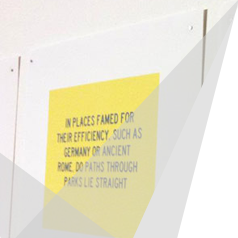Finely tuned speakers can cost hundreds of pounds, however, when you open up a speaker the basic fundamental parts are startlingly similar whether you are looking at a high-end brand made from the finest materials or a budget portable speaker. They all use the power of magnets.
Before we look at how to specifically remove and replace a magnet in a speaker, we’ll firstly take a look at the science behind how magnetism is used to create sound. Audible sound is a result of vibrations and a speaker creates these vibrations through the manipulation of the speaker’s cone. The cone is moved as current passes into what is known as the voice coil to which it is attached; when current passes through the voice coil it produces a magnetic field around the coil of either north or south polarity. This causes the voice coil and cone to either move towards or away from a fixed, permanent magnet. The cone amplifies the vibrations created by the movement, which happens hundreds of times per second to produce the sounds that you hear.
| Damaged or demagnetised magnets are common causes of dysfunctional speakers, although other common problems do exist and these can vary between manufacturers and models. We were recently contacted through our Facebook page by speaker-aficionado David Boyd, who was searching for a magnet to replace one that had broken while repairing a tweeter from a set of 1996 Bowers & Wilson floor-standing P5 speakers. David’s speakers are a model that contains ferrofluid, which had gradually dried up over the last 20 years.
Ferrofluid is used in speakers to increase the efficiency of heat dispersal from around the voice coil and to act as a damper for the cone. The ferrofluid also prevents the coil from wobbling. Each of these benefits creates a better, more efficient speaker with richer sounds. |
What is ferrofluid?Ferrofluid is a liquid that reacts to magnetic fields as it is made from tiny ferrous particles coated with a stabilising dispersing agent within a carrier liquid. When the ferrofluid is in the presence of a magnetic field each of its ferrous particles behave like a spherical magnet with a north and a south pole, experiencing torque and aligning themselves in the direction of the magnetic field. |
David had witnessed deterioration in sound quality in his speakers, which he had identified was down to a broken tweeter and a case of dried up ferrofluid. This is how he set out to fix the problem.
 |
The permanent magnet housing with dried up ferrofluid in the gap.
David says “Card and plastic removes the old fluid but not the mass of ferrous particles that were once part of the fluid and clog up the housing. These particles cling firmly to the strong magnet and steel case.” |
|
 |
A paperclip can be used to remove some of this debris but not all of it.
David says “I thought if I used a paperclip rather than card, the steel wire would hold the particles. It did. This would probably be enough to clear the air gap and get the tweeter working again, however I decided to go further and take the magnet out, so that I could do a thorough clean of the housing.” |
|
 |
 |
Once the steel cap is removed from the housing assembly it exposes the permanent magnet and the full extent of the silt left behind by dried up ferrofluid. |
 |
 |
After David had finished cleaning the assembly, the next challenge was to replace the uncoated neodymium magnet.
David says “It was difficult to place the orignal magnet down into the housing. When inserting the magnet at an angle, it wants to stand on edge. What happened here was that as I tried to carefully get it face on and set flat, the magnetic force instantly snapped it onto the housing bottom and the impact broke the magnet. Unfortunately, it is not possible to glue a magnet back together, as both pieces behave like an individual magnet and therefore will now repel each other.” |
 |
Upon the demise of the original magnet, David contacted first4magnets via Facebook and explained his dilemma. We were able to send him a new neodymium magnet of the exact same dimensions. | |
 |
 |
Here you can see the new 25mm diameter x 5mm thick neodymium magnet alongside the newly cleaned steel housing and top plate. |
 |
The next stage was to fit the new magnet into the housing without the same problem occurring.
David says “I cut a piece of plastic to stop the magnet going under the lip of the housing as I tried to slide it off the card and into the chamber. In the event, there was no such thing as sliding though: the magnetic force was difficult to manage.” |
|
 |
“The magnet kept going to the side and sticking under the lip. I got it centred (a number of times) and used various things (mainly plastic – and copper wire as it’s not magnetic) to ensure the position was as good as possible, with an equidistant air gap.” | |
 |
“The coil itself was also cleaned and then everything put back together.” | |
 |
“The speakers now work well and the improvement in sound quality is a difference that’s like night and day. I wish I had known about the drying ferrofluid issue 10 or 15 years ago – and I’ll be looking out for it with other speakers.”
We’d like to take this opportunity to thank David for allowing us to use his great photos. If you require any advice about using magnets for speakers, please do not hesitate to give our team a call on 0845 5194701. |
|


